PRIDE Fighting Championships
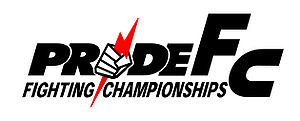 |
|
| Type | Private |
|---|---|
| Founded | 1997-2007 |
| Headquarters | |
| Industry | Mixed martial arts promotion |
| Website | http://www.pridefc.com/ |
PRIDE Fighting Championships (PRIDE or PRIDE FC for short) was a mixed martial arts organization based in Japan. Its inaugural event was held at the Tokyo Dome on October 11, 1997. PRIDE held more than sixty mixed martial arts events. As one of the most popular MMA organizations in the world during its ten years of operation, PRIDE broadcasted to about 40 countries worldwide.[1] PRIDE also held the largest live MMA event audience record of over 70,000 people at the PRIDE and K-1 co-production, Shockwave/Dynamite, held in August 2002,[2] as well as the audience record of over 67,450 people at the PRIDE Final Conflict 2003.
In March 2007, Dream Stage Entertainment sold PRIDE to Lorenzo Fertitta and Frank Fertitta III, co-owners of Zuffa, which owns rival promotion the Ultimate Fighting Championship (UFC). While remaining legally separate entities with separate managements, the two promotions were set to cooperate in a manner akin to the AFL-NFL merger. However, such an arrangement did not materialize, and in October 2007, PRIDE Worldwide's Japanese staff was laid off, marking the end of the organization as an active fight promoter. As a result many of the PRIDE staff left to form a new organization along side K-1 parent company Fighting and Entertainment Group. This new organization founded in February 2008 is entitled DREAM.
Contents |
History
Origins
PRIDE Fighting Championships was initially conceived in 1997 by Kakutougi Revolution Spirits to match popular Japanese pro-wrestler Nobuhiko Takada with Rickson Gracie, the purported champion of the Gracie family of Brazilian Jiu-Jitsu practitioners. The event, held at the Tokyo Dome on October 11, 1997 attracted 47,000 fans, as well as Japanese mass media attention. The success of the first event enabled its promoters to hold a regular series of mixed martial arts events, and a year later in 1998, promote a rematch between Takada and Gracie.[3] With K-1 enjoying popularity in Japan, PRIDE began to compete with monthly showings on Fuji Television, as well as pay per view on the newly formed satellite television channel SKY PerfecTV.
In 2000, PRIDE hosted the first ever PRIDE Grand Prix, a two-part openweight tournament held to find the "world's best fighter". The tournament was held over the course of two events, with sixteen fighters competing in an opening round, and the eight winners returning three months later for the final round. The second round of the tournament marked the first time PRIDE was broadcast in the United States, and featured American fighter Mark Coleman winning the tournament by defeating Igor Vovchanchyn in the final round.
In August 2002, PRIDE teamed up with Japan's leading kickboxing and fight promotion, K-1, and held the world's biggest fight event, Shockwave (known as PRIDE/K-1 Dynamite!! in Japan), which attracted over 90,000 fans.[4]
On January 13 2003, the PRIDE MMA production was thrown into turmoil when DSE President Naoto Morishita was found dead hanging by his neck in his hotel room, apparently after his mistress told him she wanted to end their affair.[5] Speculation still looms whether this could possibly be the real reason, as trouble with tax authorities and the yakuza have also been speculated to play a role.[3] Nobuyuki Sakakibara later assumed the presidency.
In 2003 PRIDE introduced the Bushido series of events, which focused on the lighter weight classes of lightweights and welterweights. The Bushido series also stressed a faster pace, with bouts consisting of only one ten minute round and one five minute round, as well as quicker referee intervention of stalling tactics, using the new "yellow card" system of purse deduction.
Also in 2003, PRIDE returned to the tournament format, with a middleweight grand prix spanning two events, Total Elimination 2003 and Final Conflict 2003. The format would be expanded to three events in 2004, adding Critical Countdown 2004 as the second round. PRIDE would go on to hold annual tournaments, a Heavyweight tournament in 2004, Middleweight in 2005, and Openweight in 2006.

In 2006 DSE announced it would showcase PRIDE alongside the Ultimate Fighting Championship, North America's largest MMA event, and would be integrating their fighters, including Wanderlei Silva and Kazuyuki Fujita, at a UFC MMA show in November.[6] However, Dana White, speaking on behalf of Zuffa then commented that the announced bout between Chuck Liddell and Wanderlei Silva was unlikely to happen because "the Japanese are very hard to do business with".[7] This statement was likely due to the failure of previous attempts between Zuffa and DSE to organize a fighter exchange agreement. Specifically after entering Chuck Liddell in PRIDE's 2003 middleweight tournament, which was also with the intention of Liddell eventually fighting Silva, which fell through when Chuck Liddell lost in the semi-finals to Quinton Jackson (Jackson subsequently lost to Silva by technical knockout in the finals.)
PRIDE continued to enjoy success, holding roughly ten events per year, and even out-drawing rival K-1 at the annual New Year's Eve show PRIDE Shockwave 2005. On October 21 2006, PRIDE held its first MMA event in USA, PRIDE 32: The Real Deal took place in front of an audience of 11,727 at the Thomas & Mack Center in Las Vegas, Nevada, and was the first PRIDE event to be held outside of Japan.[8]
On June 5, 2006, Fuji Network announced that they were terminating their television contract with PRIDE Fighting Championships effective immediately due to a breach of contract by DSE.[9] This left PRIDE with only SKY PerfecTV, a pay-per-view carrier, as a television outlet in Japan, and the loss of the substantial revenues from the Fuji deal threatened its sustainability. DSE was surrounded by speculation in the Japanese media, especially in Japanese tabloid Shukan Gendai, that it may be a front for the notorious yakuza crime organization. DSE responded to the loss by stating they will continue with their schedule as currently planned, including an event in Las Vegas, Nevada, PRIDE 32: The Real Deal which took place on October 21 2006, PRIDE's first event outside of Japan.[10]
In late 2006, DSE hinted at plans for Mike Tyson to fight in the organizations New Year's Eve show.[8] Tyson would face a PRIDE fighter under boxing rules. Since Tyson is not allowed to fight in Japan because of his criminal record, PRIDE wanted to stage the fight in an alternate country, possibly Macau, China. The fight would be broadcast live on large television screens in the Saitama Super Arena, where the regular mixed martial arts bouts were held.[11] The fight did not occur, however.
On November 29, 2006, PRIDE announced the discontinuation of its Bushido events, with the intention of integrating the matches from lighter weight classes, mainly featured in Bushido, into regular PRIDE events. PRIDE also announced that future Grand Prix tournaments would take place on a four year weight class cycle, with one Grand Prix per year.[12] The first expected one, a Lightweight Grand Prix, has been cancelled.[13]
PRIDE Worldwide era
On Tuesday, March 27, 2007, Nobuyuki Sakakibara announced that Station Casinos Inc. magnate Lorenzo Fertitta, co-owner of Zuffa and its subsidiary MMA production Ultimate Fighting Championship, had made a deal to acquire all assets of PRIDE Fighting Championships from Dream Stage Entertainment after PRIDE 34: Kamikaze in a deal reportedly worth under USD$70 million,[14] though the figure was not publicly disclosed.[15] Managing the assets under the newly created PRIDE FC Worldwide Holdings, LLC, including their video library and the contracts of the fighters currently on the PRIDE roster, the new management company had originally planned to continue to promote PRIDE events in Japan and keep to its previously announced schedule. Lorenzo Fertitta announced they planned to operate PRIDE separately from Zuffa's two MMA brands, the UFC and WEC, planned on having occasional crossover shows and matches, pitting fighters from PRIDE against fighters "from the UFC," using the metaphor of the AFL-NFL merger to compare the situation.[14]
Subsequent remarks by Zuffa spokesperson Dana White however cast doubt as to what the new owners would actually do with PRIDE. After the sale officially closed on May 25, 2007, White remarked that he planned on bringing PRIDE's biggest names into UFC competition instead of keeping them in PRIDE and that they were still deciding on what to do with PRIDE itself.[16] In later comments made in August 2007, White expressed doubt that Zuffa can resurrect PRIDE in Japan, claiming, "I’ve (or, we) pulled everything out of the trick box that I can and I can’t get a TV deal over there with PRIDE. I don’t think they want us there. I don’t think they want me there"(parenthesis and italics added)[17]
On October 4 2007, PRIDE Worldwide closed its Japanese office, laying off 20 people who were working there since the closing of DSE.[18]
Rules
PRIDE's rules[19] differed between main PRIDE events and Bushido events. It was announced on November 29 2006 that Bushido events would be discontinued.[12]
Match length
PRIDE matches consisted of three rounds; the first lasting ten minutes, and the second and third lasting five. Intermissions between each round were two minutes in length. In PRIDE US events, NSAC Unified MMA rules were used, with non-title matches consisting of three five minute rounds and title matches of 5 five minute rounds both having 60 second intermissions between rounds.
When two rounds of a Grand Prix took place on the same night, Grand Prix bouts consisted of two rounds; the first lasting ten minutes and the second lasting five. Intermissions between each round remained two minutes in length.
Weight classes
- PRIDE Fighting Championships does not divide their fighters based on weight divisions per se. A fighter may be booked to fight an opponent of any weight. Weight divisions are used for championship bouts and for Grands Prix to decide a best fighter at a given weight class.
- Heavyweight (more than 93 kg / 205 lb)
- Middleweight (less than or equal to 93 kg / 205 lb)
- Welterweight (less than or equal to 83 kg / 183 lb)
- Lightweight (less than or equal to 73 kg / 161 lb)
Ring
PRIDE used a five-roped square ring with sides 7 m in length (approximately 23 ft).
Attire
PRIDE allowed fighters latitude in their choice of attire but open finger gloves, a mouthguard and a protective cup were mandatory. Fighters were allowed to use tape on parts of their body or to wear a gi top, gi pants, wrestling shoes, kneepads, elbow pads, or ankle supports at their own discretion, though each was checked by the referee before the fight.
Victory
Matches could be won via:
- Submission
- A fighter taps either his opponent or the mat three times.
- A fighter may also verbally submit.
- Knockout
- A fighter falls from a legal blow and is either unconscious or unable to immediately continue.
- Technical Knockout
- Referee Stoppage (the referee stops the match after seeing that one fighter is completely dominant to the point of endangering his opponent).
- Doctor Stoppage (the referee stops the match in the event that a fighter is injured via a legal blow and the ring doctor determines that he cannot continue).
- Forfeited Match (a fighter's corner throws in the towel).
- Decision
- If the match reaches its time limit then the outcome of the bout is determined by the three judges. The fight is scored in its entirety and not round-by-round. After the third round, each judge must decide a winner. Matches cannot end in a draw. A decision is made according to the following criteria in this order of priority:
-
- the effort made to finish the fight via KO or submission,
- damage given to the opponent,
- standing combinations and ground control,
- takedowns and takedown defense,
- aggressiveness, and
- weight (in the case that the weight difference is 10 kg/22 lb or more).
- If a fight was stopped on advice of the ring doctor after an accidental but illegal action, i.e. a clash of heads, and the contest is in its second or third round, the match will be decided by the judges using the same criteria.
- Disqualification
- A "warning" will be given in the form of a yellow card or a green card (The green card gives a 10% deduction of a fighters purse) when a fighter commits an illegal action or does not follow the referee's instruction. Three warnings will result in a disqualification.
- A fighter will be disqualified if a match is stopped on advice of the ring doctor as a result of his deliberate illegal actions.
- The application of oil, ointment, spray, Vaseline, massaging cream, hair cream, or any other substances to any part of the fighter's body before and during the fights is prohibited. The discovery of any of these substances will result in a disqualification.
- No Contest
- In the event that both sides commit a violation of the rules, the bout will be declared a "No Contest."
- If a fight is stopped on advice of the ring doctor after an accidental but illegal action, i.e. a clash of heads, the match will be declared a no contest in the first round only.
Fouls
PRIDE Fighting Championships considered the following to be fouls:
- Head butting.
- Eye gouging.
- Hair pulling.
- Biting.
- Fish hooking.
- Any attacks to the groin
- Strikes to the back of the head, which includes the occipital region and the spine. The sides of the head and the area around the ears are not considered to be the back of the head. (see Rabbit punch)
- Small joint manipulation (control of four or more fingers/toes is necessary).
- Elbow strikes to the head and face.
- Intentionally throwing your opponent out of the ring.
- Running out of the ring.
- Purposely holding the ropes. Fighters cannot purposely hang an arm or leg on the ropes and it will result in an immediate warning.
In the event that a fighter is injured by illegal actions, then at the discretion of the referee and ring doctor, the round would attempt to be resumed after enough time has been given to the fighter to recover. If the match could not be continued due to the severity of the injury then the fighter who perpetrated the action was disqualified.
Match conduct
- If both fighters are on the verge of falling out of the ring or become entangled in the ropes, the referee would stop the action. The fighters must immediately stop their movements and then be repositioned in the center of the ring in the same relative position. Once they were comfortably repositioned, they would resume at the referee's instruction.
- Referees can give a fighter a penalty card for lack of activity. Every card, including warning cards, are a 10% deduction of a fighter's purse, this method was aimed to prevent inaction.
Matches between fighters of different weight classes
PRIDE made special provision for fights between fighters of different weight classes or fighters with a large weight difference in the same weight class. The lighter fighter was given a choice on whether to permit knees or kicks to the face when in the "four points" position in the following cases:
- If both fighters are in the middleweight class and there is a weight difference of 10 kg/22 lb or more between the fighters.
- If the match is between a middleweight and heavyweight and there is a weight difference of 10 kg/22 lb or more between the fighters.
- If both fighters are in the heavyweight class and there is a weight difference of 15 kg/33 lb or more between the fighters.
PRIDE Bushido
There were a few minor differences from main PRIDE events.
- Bouts on PRIDE Bushido events consisted of two rounds; the first lasting ten minutes and the second lasting five. Intermissions between each round are two minutes in length.
- Bushido "Challenge Matches" consist of two rounds lasting five minutes each. Intermissions between each round are two minutes in length.
- In Bushido, red cards were issued in a similar way that yellow cards are used in PRIDE FC. A red card results in a 10% deduction of the fighter's fight purse. Red cards couldbe given out in an unlimited number without disqualification. If fighters committed the following actions, they shall be given a red card by officials:
- Stalling or failure to initiate any offensive attack,
- making no attempt to finalize the match or damage the opponent, and
- holding the opponent's body with the arms and legs to produce a stalemate.
Differences from the Unified Rules of Combat
Some states' athletic commissions require mixed martial arts events to modify rules to match the Mixed Martial Arts Unified Rules of Combat, as introduced by the New Jersey State Athletic Control Board, and adopted by the Nevada State Athletic Commission in order to receive state sanctioning.[20][21]
PRIDE's rules differed from the Unified Rules of Combat in the following ways:
- PRIDE allows kicking and kneeing the head of a downed opponent who is on his back. This is considered a foul in the Unified Rules, which only allows kicks and knees to the head of a standing opponent.
- PRIDE allows a fighter to stomp the head of a downed opponent. This is considered a foul in the Unified Rules.
- PRIDE allows a fighter to Spike (piledriver) an opponent. This is considered a foul in the Unified Rules.
- PRIDE does not allow elbow strikes to the head of an opponent. The Unified rules allows elbows provided they are not striking directly down with the point of the elbow.
- PRIDE's matches include a ten minute first round, with two minute rest periods. The Unified rules allow rounds no longer than five minutes, with rest periods not exceeding one minute.
- PRIDE's matches are not judged on the ten point must system, rather judges score the whole fight. The Unified rules call for all matches to be judged using the ten point must system.
At the announcement on March 27, 2007 that the Fertittas are purchasing PRIDE, it was stated that all future PRIDE events (after PRIDE 34) would be held under Unified Rules, eliminating 10 minute opening rounds, ground knees, stomps and more.[22]
PRIDE events
In addition to their main, "numbered" events, PRIDE have staged other series of events for different purposes.
PRIDE Grand Prix
The PRIDE GP (Grand Prix) is the name for a series of tournaments held by PRIDE. In addition to a money prize, a championship belt was given to the winner of each tournament, though this belt only denoted the tournament winner and would never be defended. However, PRIDE's Shockwave 2005 event crowned not only the welterweight and lightweight tournament champions, but also PRIDE's inaugural welterweight and lightweight champions. Of note is the amount of past and future champions that would participate in these tournaments.
In 2000, PRIDE held their first grand prix. With no weight limits, it is now considered to be their first openweight grand prix. Held across two events, PRIDE Grand Prix 2000 Opening Round featured first round bouts and PRIDE Grand Prix 2000 Finals featured the quarter finals, semi finals and final.
The concept was brought back in 2003, with a middleweight grand prix. Held across two cards, Total Elimination 2003 featured the first round of the Grand Prix and Final Conflict 2003 featured the semi finals and final. Subsequent middleweight, heavyweight and openweight grands prix have taken place across three events when, in 2004, Critical Countdown was introduced for second round bouts. Both Critical Countdown and Final Conflict have a mix of grand prix and non-grand prix matches.
In 2007, it was announced that PRIDE will hold only one grand prix a year and it will rotate between each of their four established weight classes.[12]
Format
Tournament dates with only one round would adhere to normal PRIDE or PRIDE Bushido rules. For tournament dates that held two rounds, a fight would have a 10 minute first round, followed by a 2 minute rest period for the fighters, and then a 5 minute last round.
Exceptions
Of special note, the 2000 Finals held a 90 minute contest between Kazushi Sakuraba and Royce Gracie. Gracie had requested that there be no judging and no limit to the number of rounds. Sakuraba agreed to fight under these rules, and the contest went to a total of 90 minutes of fighting, after which Gracie's corner threw in the towel due to damage to Gracie's legs. Sakuraba advanced to the next round, fighting a fifteen minute first round against eventual runner up Igor Vovchanchyn, after which Sakuraba's corner threw in the towel citing his exhaustion.
PRIDE Bushido
With PRIDE's numbered shows and Grands Prix focused on heavier fighters, in October 2003, PRIDE started a series of events entitled "Bushido". With the focus on lighter combatants, two weight classes, lightweight and welterweight, were formed at 73 and 83 kg respectively. After PRIDE Bushido 13, it was announced that the series would end and these weight classes would transfer to main PRIDE shows.
In 2005, PRIDE Bushido staged welterweight and lightweight grands prix. Two eight-man brackets were set up and the quarter finals and semi finals were held at PRIDE Bushido 9, along with an alternate bout in each bracket. The finals were held at PRIDE Shockwave 2005, with the winners subsequently being crowned as champions for their division. A sixteen-man welterweight grand prix was held in 2006.
PRIDE The Best
In 2002, PRIDE launched The Best, a series of shows featuring up-and-coming fighters, using an eight-sided roped ring. However, after the third show in October 2002, the series was discontinued. The concept was later refined into the PRIDE BUSHIDO events.
PRIDE final champions
With PRIDE FC events no longer being promoted, these titles are inactive. The titleholders below were those who held the titles on April 8, 2007, the date of the last PRIDE FC promoted show.
| Division | Weight limit | Champion | |
|---|---|---|---|
| Name | Country | ||
| Heavyweight | at or above 205 lb (93 kg/14.6 st) | Fedor Emelianenko | |
| Middleweight | below 205 lb (93 kg/14.6 st) | Dan Henderson | |
| Welterweight | below 183 lb (83 kg/13.1 st) | Dan Henderson | |
| Lightweight | below 161 lb (73 kg/11.5 st) | Takanori Gomi | |
| Year | Weight Division | Champion | Finalist | ||
|---|---|---|---|---|---|
| Name | Country | Name | Country | ||
| 2000 | Openweight | Mark Coleman | Igor Vovchanchyn | ||
| 2003 | Middleweight | Wanderlei Silva | Quinton Jackson | ||
| 2004 | Heavyweight | Fedor Emelianenko | Antonio Rodrigo Nogueira | ||
| 2005 | Middleweight | Mauricio Rua | Ricardo Arona | ||
| Welterweight | Dan Henderson | Murilo Bustamante | |||
| Lightweight | Takanori Gomi | Hayato Sakurai | |||
| 2006 | Openweight | Mirko Filipović | Josh Barnett | ||
| Welterweight | Kazuo Misaki | Denis Kang | |||
Notable PRIDE fighters
The following fighters have won a tournament or Championship titles in PRIDE. Some have competed in different weight classes.
Heavyweight
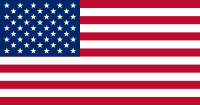 Mark Coleman (PRIDE FC 2000 Grand Prix Champion)
Mark Coleman (PRIDE FC 2000 Grand Prix Champion)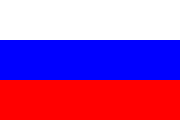 Fedor Emelianenko (Last PRIDE FC Heavyweight Champion & PRIDE FC 2004 Heavyweight Grand Prix Champion)
Fedor Emelianenko (Last PRIDE FC Heavyweight Champion & PRIDE FC 2004 Heavyweight Grand Prix Champion) Mirko 'Cro Cop' Filipović (PRIDE FC 2006 Open Weight Grand Prix Champion)
Mirko 'Cro Cop' Filipović (PRIDE FC 2006 Open Weight Grand Prix Champion)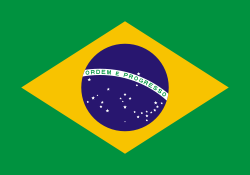 Antonio Rodrigo Nogueira (First PRIDE FC Heavyweight Champion & PRIDE FC Heavyweight Interim Champion)
Antonio Rodrigo Nogueira (First PRIDE FC Heavyweight Champion & PRIDE FC Heavyweight Interim Champion)
Middleweight
 Dan Henderson (First & Last PRIDE FC Welterweight Champion, Last PRIDE FC Middleweight Champion & PRIDE FC 2005 Welterweight Grand Prix Champion)
Dan Henderson (First & Last PRIDE FC Welterweight Champion, Last PRIDE FC Middleweight Champion & PRIDE FC 2005 Welterweight Grand Prix Champion) Mauricio "Shogun" Rua (PRIDE FC 2005 Middleweight Grandprix Champion)
Mauricio "Shogun" Rua (PRIDE FC 2005 Middleweight Grandprix Champion) Wanderlei Silva (Former PRIDE FC Middleweight Champion & PRIDE FC 2003 Middleweight Grand Prix Champion)
Wanderlei Silva (Former PRIDE FC Middleweight Champion & PRIDE FC 2003 Middleweight Grand Prix Champion)
Welterweight
 Dan Henderson (First & Last PRIDE FC Welterweight Champion, Last PRIDE FC Middleweight Champion & PRIDE FC 2005 Welterweight Grand Prix Champion)
Dan Henderson (First & Last PRIDE FC Welterweight Champion, Last PRIDE FC Middleweight Champion & PRIDE FC 2005 Welterweight Grand Prix Champion)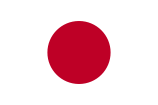 Kazuo Misaki (PRIDE FC 2006 Welterweight Grand Prix Champion)
Kazuo Misaki (PRIDE FC 2006 Welterweight Grand Prix Champion)
Lightweight
 Takanori Gomi (First & Last PRIDE FC Lightweight Champion & PRIDE FC 2005 Lightweight Grand Prix Champion)
Takanori Gomi (First & Last PRIDE FC Lightweight Champion & PRIDE FC 2005 Lightweight Grand Prix Champion)
See also
- Mixed Martial Arts
- List of PRIDE events
- List of PRIDE champions
- List of male mixed martial artists
- List of MMA organizations
- Yarennoka
References
- ↑ What is PRIDE?, Official PRIDE site. Last retrieved December 5 2006
- ↑ Trembow, Ivan (2007-03-15). "UFC 68 BREAKS NORTH AMERICAN ATTENDANCE RECORD", MMAWeekly.com. Retrieved on 2007-03-15.
- ↑ 3.0 3.1 Japan's Fight Clubs, JapanInc.com. Last retrieved December 5 2006
- ↑ Trembow, Ivan (2007-03-15). "UFC 68 BREAKS NORTH AMERICAN ATTENDANCE RECORD", MMAWeekly.com. Retrieved on 2007-03-15.
- ↑ Fight promoter cashes in his chips, Mainichi Daily News. Last retrieved December 5 2006
- ↑ WANDERLEI SILVA & CHUCK LIDDELL SET TO WAR IN THE OCTAGON, Official PRIDE site. Last retrieved December 5 2006
- ↑ Liddell Silva fight could be off, according to UFC president, CBC.ca. Last retrieved December 5 2006
- ↑ 8.0 8.1 PRIDE FIGHTING PLANS TO STAY IN THE US, PRIDE official site. Last retrieved December 5 2006
- ↑ Fuji TV cancels PRIDE for good, FightOpinion.com. Last retrieved December 5 2006
- ↑ DSE press conference notes, FightOpinion.com. Last retrieved December 5 2006
- ↑ [http://www.mmafighting.com/news/2006/mike_tyson_world_tour.html "Mike Tyson's World Tour" begins October 20, MMAFighting.com. Last retrieved December 5 2006
- ↑ 12.0 12.1 12.2 PRIDE MAKING BIG CHANGES IN 2007, MMAWeekly.com. Last retrieved December 5 2006
- ↑ PRIDE GP Opener in Nagoya Now Officially Nixed, Sherdog.com. Last retrieved May 25 2006
- ↑ 14.0 14.1 Associated Press, Source: UFC buys Pride for less than $70M, March 27, 2007.
- ↑ The Fight Network. PM Update – August 26, August 26, 2007.
- ↑ Meltzer, Dave (2007-05-27). "Pride sale is official, really", Wrestling Observer Online. Retrieved on 2007-05-29.
- ↑ Hunt, Loretta (2007-08-26). "PM UPDATE – AUGUST 26", TheFightNetwork.com. Retrieved on 2007-08-28.
- ↑ Kotani, Taro (2007-10-05). "PRIDE WORLDWIDE JAPAN OFFICE OFFICIALLY CLOSED", MMAWeekly.com. Retrieved on 2007-10-05.
- ↑ PRIDE rules, Official PRIDE site. Last retrieved December 5 2006
- ↑ Mixed Martial Arts Unified Rules of Conduct, Additional Mixed Martial Arts Rules, New Jersey Athletic Control Board. Retrieved April 3 2006
- ↑ NSAC Regulations: CHAPTER 467 - UNARMED COMBAT. Nevada State Athletic Commission. Retrieved December 5 2006
- ↑ PRIDE IS HERE TO STAY: FERTITTAS ACQUIRE PRIDE, MMA Weekly, [1]
External links
- PRIDE FC's official English website
- PRIDE FC's official Japanese website
- PRIDE FC's official Korean website
|
|||||||||||||||||||||||